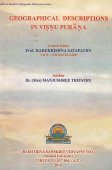Kulaparvata, Kula-parvata: 12 definitions
Introduction:
Kulaparvata means something in Hinduism, Sanskrit, Marathi. If you want to know the exact meaning, history, etymology or English translation of this term then check out the descriptions on this page. Add your comment or reference to a book if you want to contribute to this summary article.
Kulaparvata has 10 English definitions available.
Languages of India and abroad
Sanskrit dictionary
[Deutsch Wörterbuch]
Source: Cologne Digital Sanskrit Dictionaries: Böhtlingk and Roth Grosses Petersburger WörterbuchKulaparvata (कुलपर्वत):—(kula + pa) m. Hauptberg oder Hauptgebirge, deren 7 in Bhārata aufgeführt werden [Viṣṇupurāṇa 174.] — Vgl. kulagiri, kulabhūbhṛt, kulācala, kulādri .
Source: Cologne Digital Sanskrit Dictionaries: Sanskrit-Wörterbuch in kürzerer FassungKulaparvata (कुलपर्वत):—m. Hauptberg , -gebirge.
Sanskrit, also spelled संस्कृतम् (saṃskṛtam), is an ancient language of India commonly seen as the grandmother of the Indo-European language family (even English!). Closely allied with Prakrit and Pali, Sanskrit is more exhaustive in both grammar and terms and has the most extensive collection of literature in the world, greatly surpassing its sister-languages Greek and Latin.
See also (Relevant definitions)
Partial matches: Parvata, Kula.
Full-text (+108): Pariyatra, Shuktiman, Vindhya, Mahendra, Kulacala, Sahya, Malaya, Rikshavan, Shuktimat, Kuladri, Kanyacala, Kulashikharin, Varnamalagra, Ashoka, Hariparvata, Shvetavarna, Koranja, Suryakanta, Vidyutvanta, Rikshavanta.
Relevant text
Search found 13 books and stories containing Kulaparvata, Kula-parvata, Kūḷaparvata, Kūlaparvata; (plurals include: Kulaparvatas, parvatas, Kūḷaparvatas, Kūlaparvatas). You can also click to the full overview containing English textual excerpts. Below are direct links for the most relevant articles:
The Brahma Purana (by G. P. Bhatt)
The Linga Purana (by J. L. Shastri)
Chapter 53 - Geography of the World < [Section 1 - Uttarabhāga]
The Matsya Purana (critical study) (by Kushal Kalita)
Part 2 - Rivers and Mountains of Bhāratavarṣa < [Chapter 8 - Geographical data in the Matsyapurāṇa]
Geographical Aspects of the Purāṇas (Introduction) < [Chapter 8 - Geographical data in the Matsyapurāṇa]
The Shiva Purana (by J. L. Shastri)
Chapter 18 - The greatness of the Jyotirliṅga Oṃkāreśvara < [Section 4 - Koṭirudra-Saṃhitā]
Chapter 18 - Seven continents (varṣa) < [Section 5 - Umā-Saṃhitā]
Chapter 5 - Binduga’s salvation < [Śivapurāṇa-māhātmya]
The Skanda Purana (by G. V. Tagare)
Chapter 33 - Greatness of Agastya’s Hermitage < [Section 1 - Tīrtha-māhātmya]
Chapter 7 - The Advent of Kūrma Kalpa < [Section 3 - Revā-khaṇḍa]
Chapter 6 - Epithets of Narmadā Explained < [Section 3 - Revā-khaṇḍa]
Rivers in Ancient India (study) (by Archana Sarma)
11. Descriptions of the rivers in the Jambudvīpa < [Chapter 5 - Rivers in the Purāṇic Literature]
Related products

